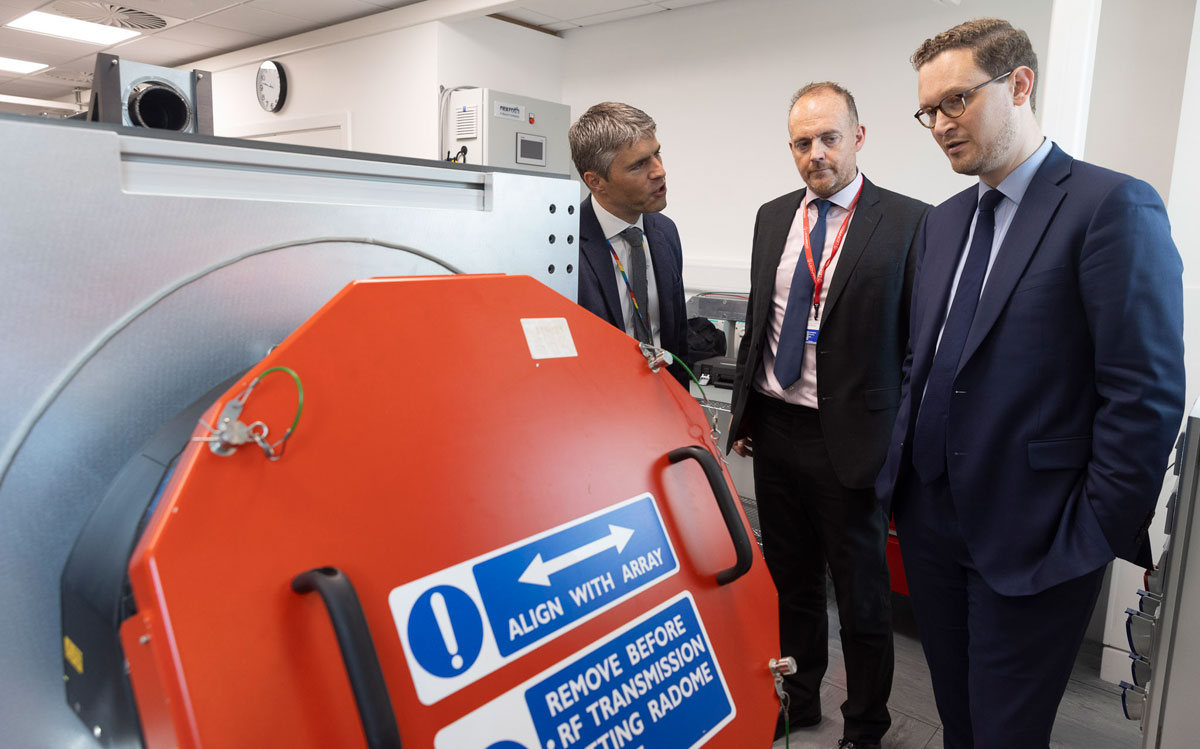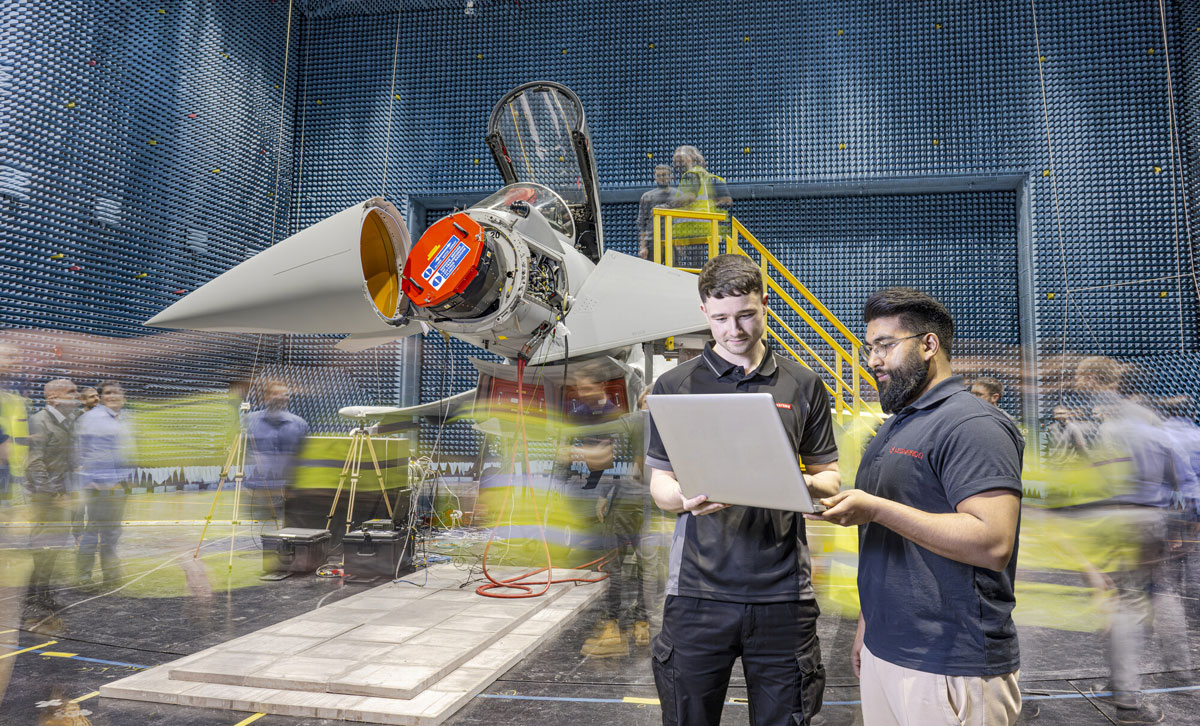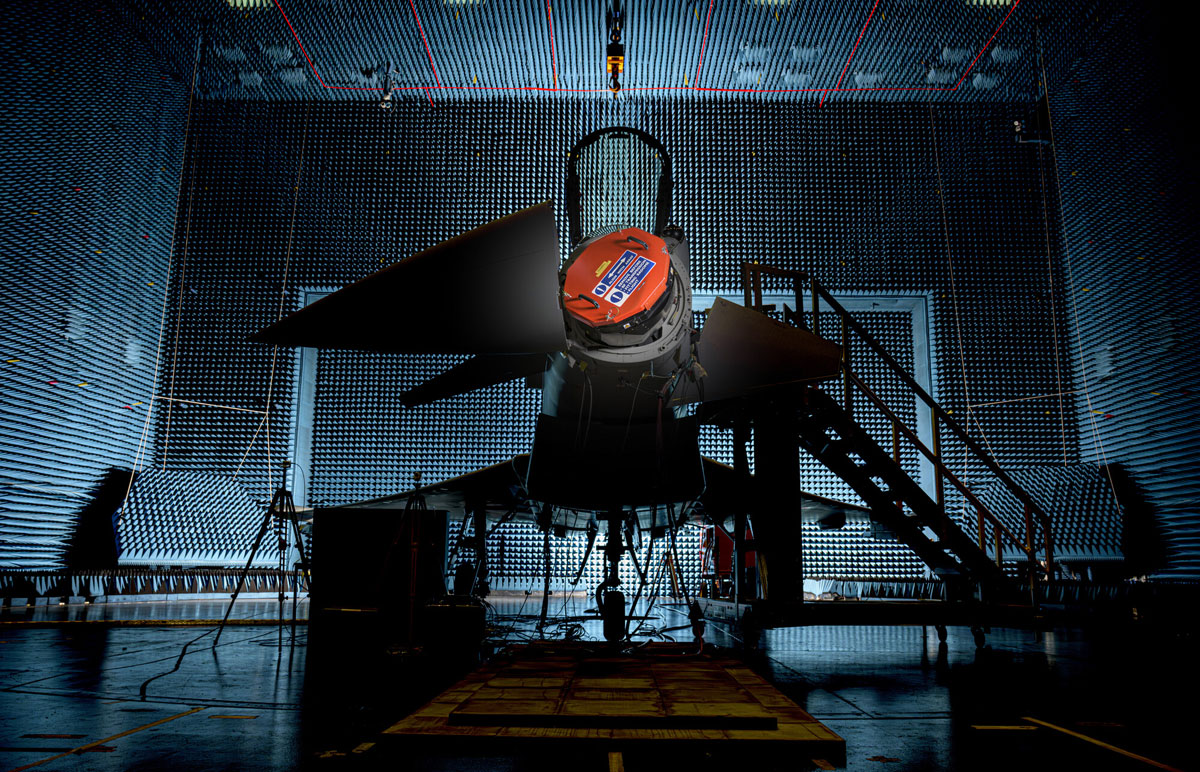The state-of-the-art radar, known as the ECRS Mk2, will transform the Typhoon’s control of the air, bringing a world-leading electronic warfare capability which will allow the aircraft to simultaneously detect, identify and track multiple targets in the air and on the ground.
The latest tranche of funding builds on successful flight trials which concluded in February. It secures the critical long-lead elements required to manufacture the radar, drawing on a UK-wide supply chain. It comes ahead of a contract for full-rate radar production later in 2025 and delivery of radars ready for integration from 2028. The ECRS Mk2 is on track to go into service with the RAF by the end of the decade.

Chief Secretary to the Treasury, The Rt Hon Darren Jones MP (right), during the visit to Leonardo in Edinburgh
ECRS Mk2 is being developed and manufactured by Leonardo in Edinburgh and Luton and integrated onto the Typhoon aircraft by BAE Systems in Lancashire. The companies are at the heart of the UK’s internationally competitive combat air industry, which accounts for over 80% of UK defence exports. Typhoon exports sales have helped to generate more than £30bn return to the UK economy to date, from an initial investment of £12bn from the UK Government. The ECRS Mk2 radar project is directly supporting 600 jobs across UK industry including more than 400 at Leonardo and 120 at BAE Systems, predominantly in Scotland and the Northwest of England.
Together with the integration of the radar onto the Eurofighter Typhoon via a 4-Nation programmed called Phase 4 Enhancement (P4E), the overall capability upgrade will sustain up to 1,300 highly skilled jobs across the UK over the next decade.

Engineers undertake ground-based testing on the ECRS Mk2 radar ahead of flight trials
During the visit to Edinburgh, the Chief Secretary to the Treasury was also able to meet young people employed by Leonardo on early careers schemes, including its Ofsted outstanding-rated apprenticeship programme. Many were supporting an outreach activity for local schools featuring remote-controlled robots, promoting the opportunities offered by engineering careers and Science, Technology, Engineering and Maths (STEM) subjects.
The recently published Strategic Defence Review highlights the importance of skills and innovation to UK national security as well as the planned comprehensive set of upgrades (including the new ECRS Mk2 radar) to enhance the combat effectiveness of Typhoon and deliver operational advantage against an evolving threat.
A prototype ECRS Mk2 radar was flown for the first time on-board an RAF Typhoon aircraft in autumn 2024 and successfully completed a campaign of flight trials in February this year.

A Eurofighter Typhoon test and evaluation aircraft equipped with the ECRS Mk2 radar
Mark Hamilton, Managing Director Electronics UK, Leonardo, said: "With modern conflict demonstrating the importance of electronic warfare to combat operations, we are proud that the UK’s onshore combat air industry is the first in Europe to offer a radar with embedded wideband Suppression of Enemy Air Defence (SEAD) electronic warfare capabilities through a multi-functional array. Development is running several years ahead of other international efforts, and we expect to have the radar in service with the UK RAF before the end of the decade."
Richard Hamilton, Managing Director Europe and International, BAE Systems Air, said: "This commitment to the continued evolution of Typhoon’s capability ensures the RAF maintains its operational advantage. It also sustains the UK’s sovereign combat air skills enabling Typhoon to secure our skies into the future."
Lyndon Hoyle, Head of Typhoon Delivery Team, Defence Equipment & Support, said: "The UK’s commitment to these long-lead packages in support of series production reflects the growing confidence in the progress being made by UK Industry in developing this state-of-the-art radar and growing maturity of the system design.
"With initial production radars due to become available from 2028, the race is now on to get them integrated as soon as possible through the 4-Nation Eurofighter programme and deliver the battle-winning capability into the hands of the war fighter."

